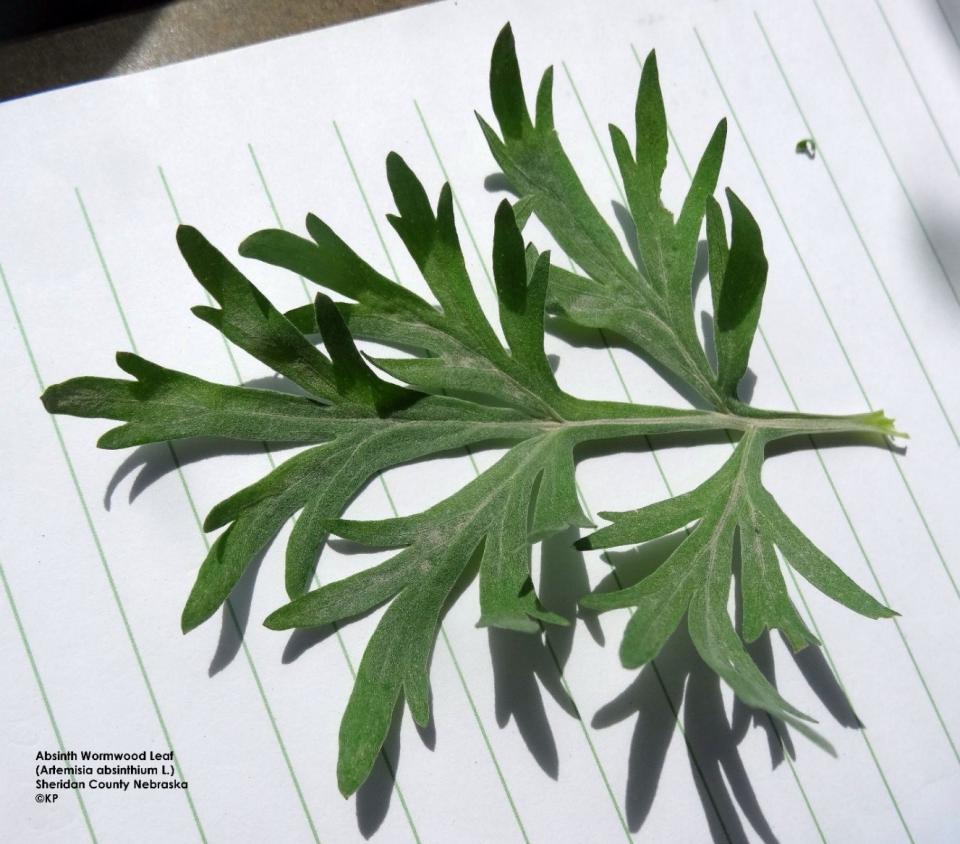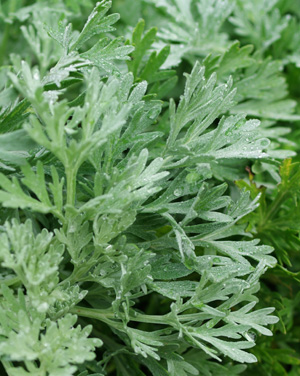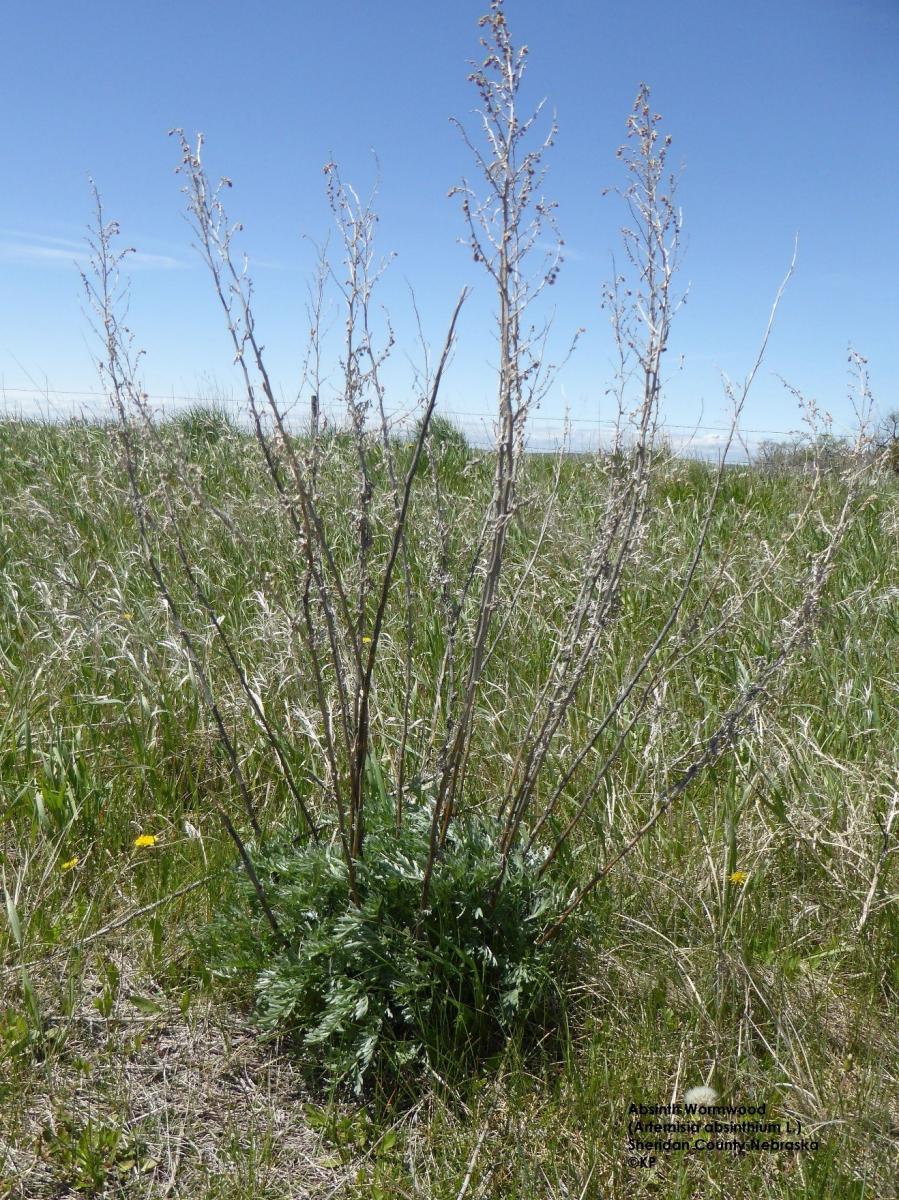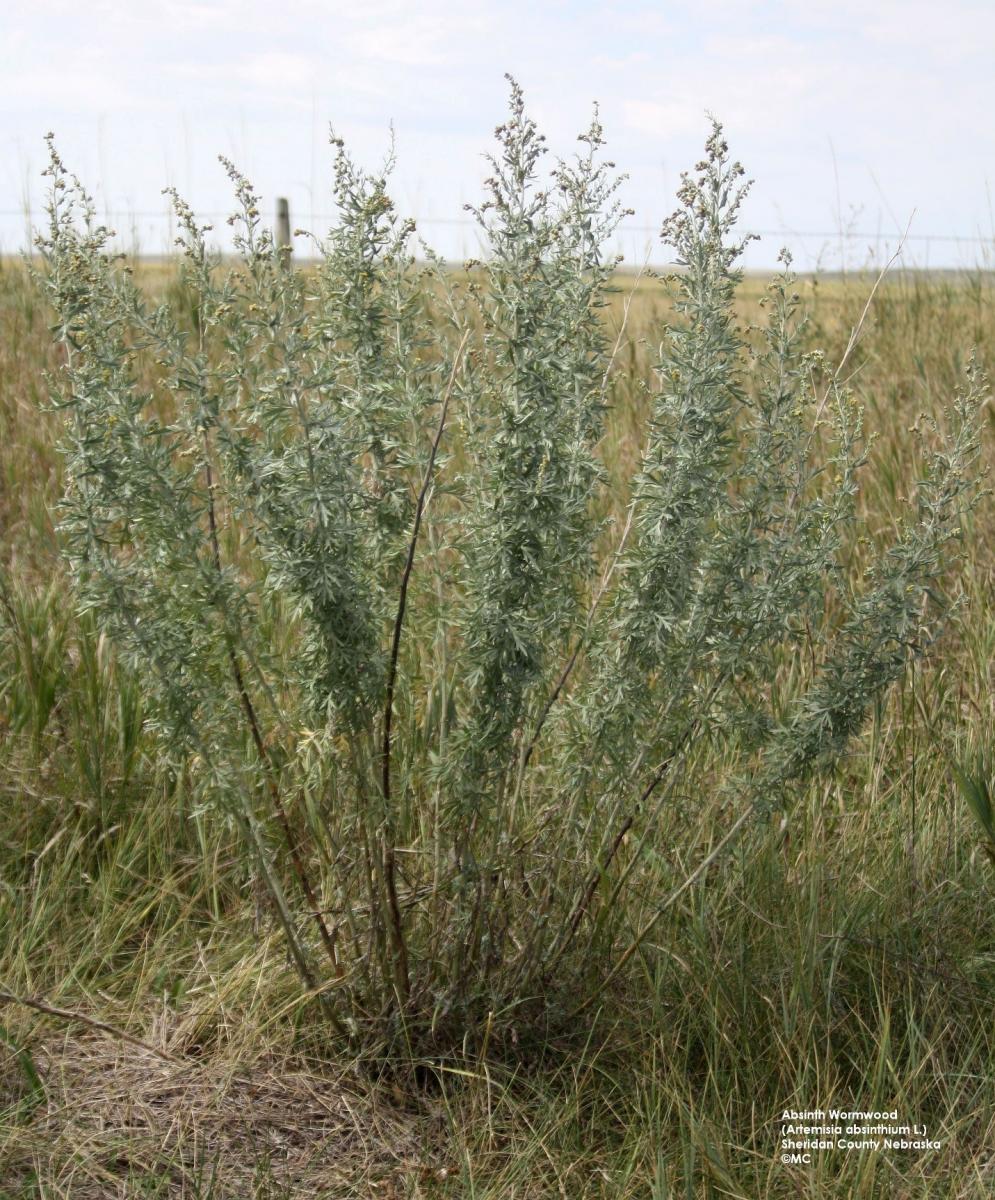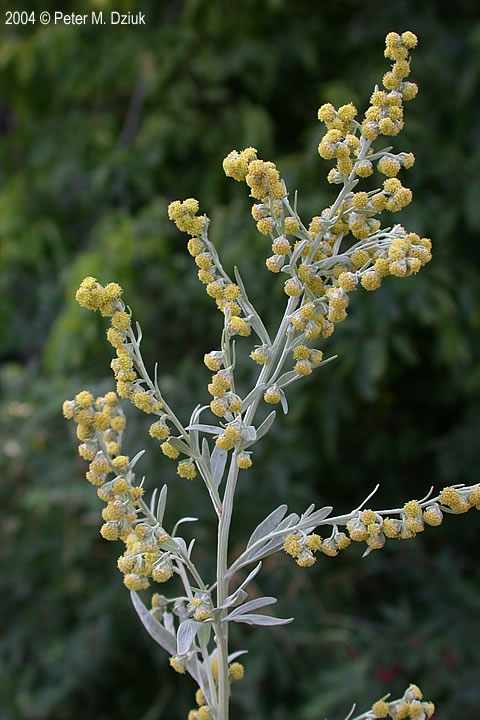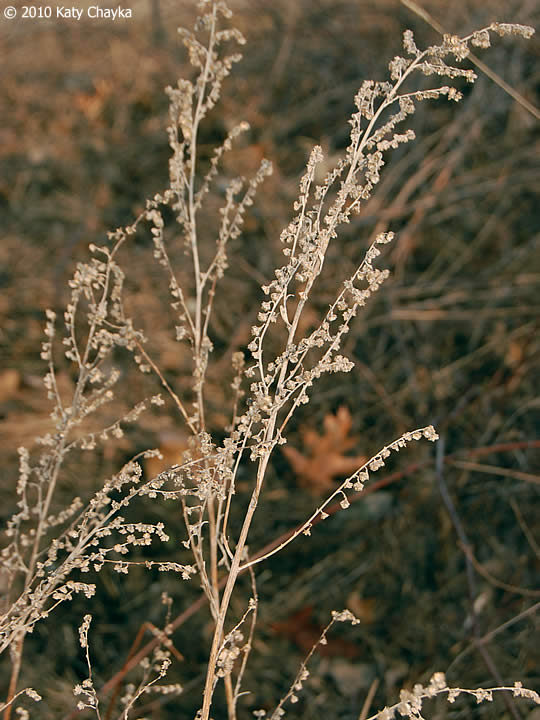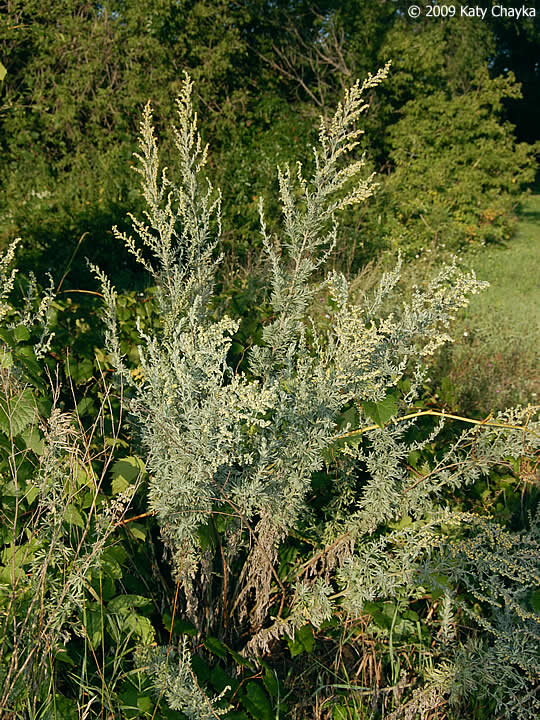Absinth Wormwood
Artemisia absinthium L.
Description
Other Common Names: absinthium, absinth sage, American wormwood, common wormwood, mugwort, wormwood, wormwood sage.
Origin: Europe, Northern Asia, Northern Africa. First reported in North America in the 1840s.
Growth Habit: Erect, perennial forb, approximately 1.5-4 ft. tall.
Leaves: 1-3 in. long, deeply dissected, covered with fine hair grey or silver in color.
Stems: Erect, covered with fine silky hairs, makes plant appear grayish.
Flowers: Small, dull yellow flowers in panicles towards top of plant, blooms in July and August.
Roots: Large, woody taproot.
Seeds: Germinate in late summer through early fall, remain viable in the soil for up to 4 years.
Other: Emits strong medicinal odor. Toxic to horses. Little to no forage value; sheep can graze it, but cattle who graze it will taint their milk supply.
State Location
Absinth wormwood is widespread in the shortgrass prairie and Sandhills ecoregions. It establishes quickly in disturbed areas, such as roadsides, and overgrazed sites. The plant is found in both dry and moist soils. It can spread on farmsteads after being imported in out-of-state hay or forage contaminated with absinth wormwood seed.
Prevention and Control
Buy certified weed-free forage or hay to ensure you are not importing the plant's seed. You can learn more about how to purchase certified weed-free forage through the Nebraska Weed Control Association's Weed Free Forage Program.
Prevent absinth wormwood establishment on pastures and/or rangelands by maintaining well-established grasses and forbs through proper grazing and rotational grazing techniques.
Absinth wormwood can be treated with herbicides containing clopyralid, dicamba, Picloram, glyphosate, and 2,4-D. Ensure you select the correct product that is labeled for the site you plan to use it on. Read, understand, and follow all label instructions when using a pesticide.
The Flora of Nebraska, 2012, Robert B. Kaul, David Sutherland and Steven Rolfsmeier.
